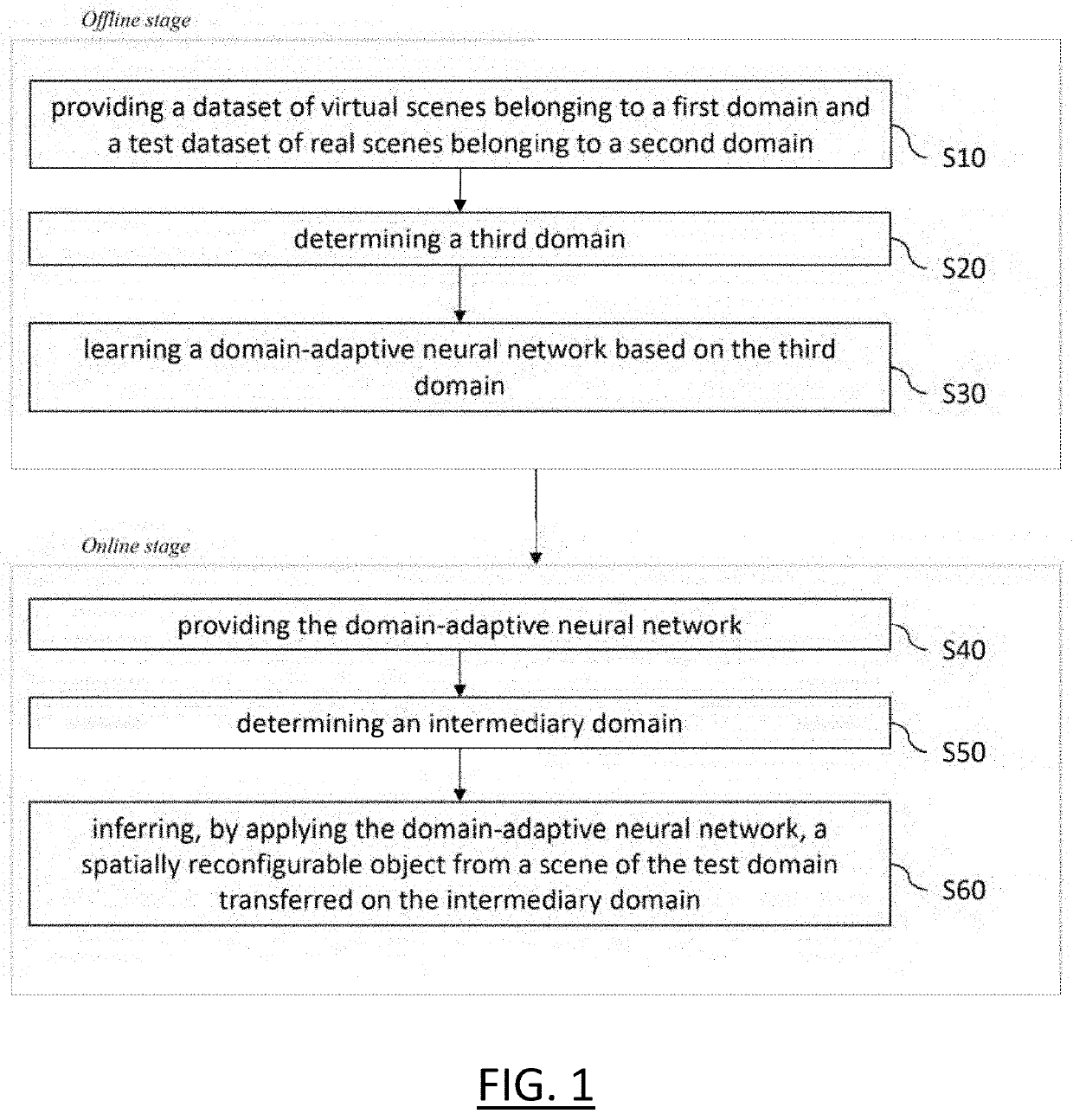Experience learning in virtual world
a virtual world and learning technology, applied in the field of computer programs and systems, can solve the problems of manual annotation, difficult collection of hundreds of thousands of labeled data, and time-consuming labeling
- Summary
- Abstract
- Description
- Claims
- Application Information
AI Technical Summary
Benefits of technology
Problems solved by technology
Method used
Image
Examples
Embodiment Construction
[0071]It is provided computer-implemented methods of machine-learning with a dataset of scenes including spatially reconfigurable objects.
[0072]It is notably provided a first method of machine-learning. The first method comprises providing a dataset of virtual scenes. The dataset of virtual scenes belongs to a first domain. The first method further comprises providing a test dataset of real scenes. The test dataset belongs to a second domain. The first method further comprises determining a third domain. The third domain is closer to the second domain than the first domain in terms of data distributions. The first method further comprises learning a domain-adaptive neural network based on the third domain. The domain-adaptive neural network is a neural network configured for inference of spatially reconfigurable objects in a real scene. This first method may be referred to as “domain-adaptive learning method” in the following.
[0073]The domain-adaptive learning method forms an improv...
PUM
 Login to View More
Login to View More Abstract
Description
Claims
Application Information
 Login to View More
Login to View More - R&D
- Intellectual Property
- Life Sciences
- Materials
- Tech Scout
- Unparalleled Data Quality
- Higher Quality Content
- 60% Fewer Hallucinations
Browse by: Latest US Patents, China's latest patents, Technical Efficacy Thesaurus, Application Domain, Technology Topic, Popular Technical Reports.
© 2025 PatSnap. All rights reserved.Legal|Privacy policy|Modern Slavery Act Transparency Statement|Sitemap|About US| Contact US: help@patsnap.com



